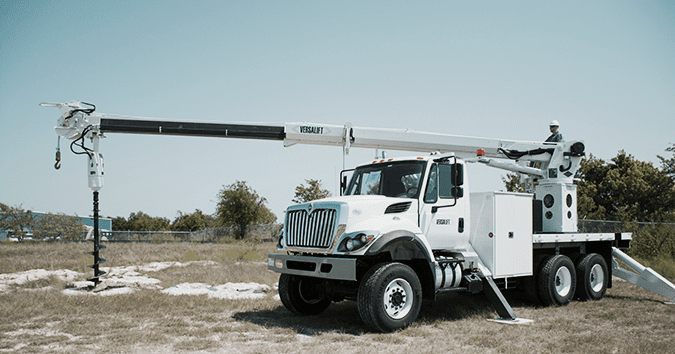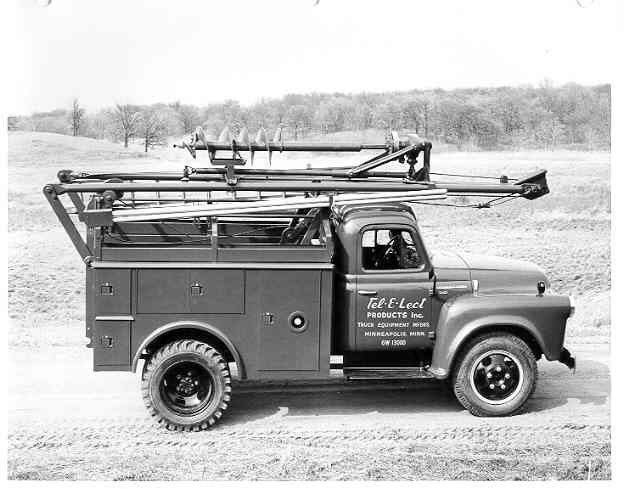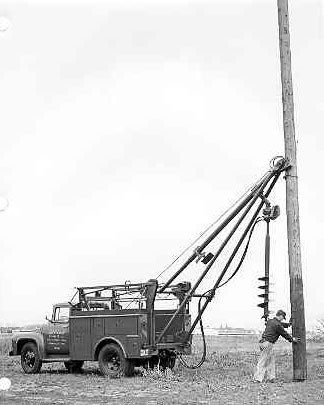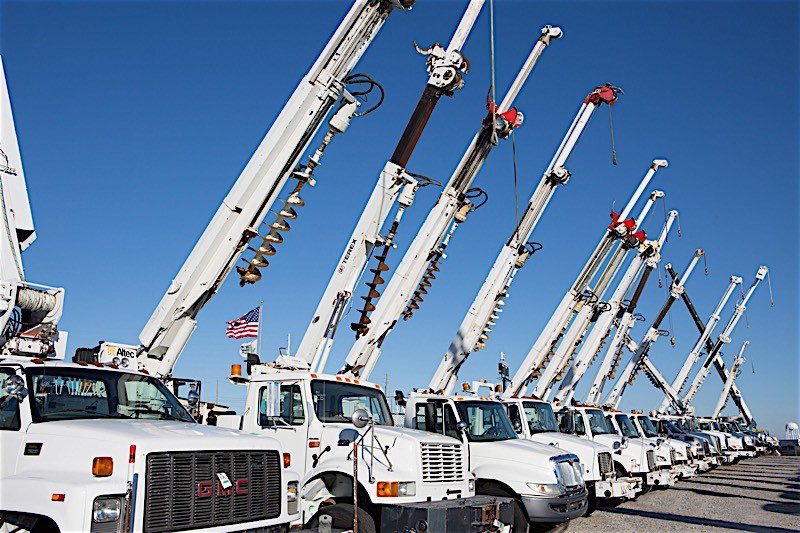Digger derricks are used mainly in the electrical, telecommunications, and cable fields, as well as in the construction industry. Derrick trucks feature an auger that drills the hole, and pole clamps to grasp the pole as it is being inserted.

The main components of a digger derrick are the pedestal, the turntable, the booms, the cylinders for boom control, the outriggers or stabilizers, the digger motor, the auger and auger teeth, and the controls. From digging to lifting, these trucks are designed to literally do it all.
The rotating hex-shaft auger is specifically designed to penetrate hard soil and dirt and convey broken and loose material out of the ground. This is accomplished because of the design of the auger flights which directs loosened dirt and rock out of the hole as the auger rotates.

But it wasn’t always so easy … in the early days of electrification, power line construction was a manual process. Crews actually dug holes using shovels and hand-augers. They used ropes and manpower to walk the poles up into position, and then refilled the holes and tamped the ground by hand. During the World War II era, the desire to be a more global community spurred the need to quickly build the world’s power and communication grid. This development made it necessary for utility crews to look for ways to automate the line construction process. From this need, the first mechanical digger derrick was developed.
1940’s:
Leroy C. Lindquist, owner of the Minnetonka Manufacturing Company which manufactured parts for the Telephone and Electric (Tel-E-lect) utility markets in Hopkins, MN, worked with Northwestern Bell Telephone Company to develop a machine run by power take-off (PTO) on a truck’s transmission to dig holes for telephone poles more quickly. The first Tel-E-lect trucks utilized the truck’s differential to mechanically turn an auger, which was suspended from the end of an A-frame boom and was raised and lowered by the truck winch line to drill a hole.

1950’s and 1960’s:
Three Tel-E-lect digger derrick product innovations were introduced that are still in use today
- the Rite-Way auger storage bracket,
- pole grabbing (PG) winch, and
- the hydraulic collector block.
- With the hydraulic collector block, digger derricks could, for the first time, rotate continuously and without restriction making them a much more versatile machine
1960’s and 1970’s
Hydraulic digger derricks were introduced and these trucks were also designed to be mounted on a smaller, lighter, and more maneuverable chassis, giving crews more flexibility and versatility with their fleets. Digger derricks during this era were also engineered with strong box-constructed booms and powerful dual lift cylinders, a configuration so sturdy and reliable that it is still the standard today. This decade also saw the introduction of the digger derrick’s first fiberglass third section built to eliminate pin-on third sections.

To be continued …. check out the UEP Guys next blog as they continue the history of the incredible digger derrick truck.
Contact Utility Equipment Parts (UEP) today for all your digger derrick needs, including augers and accessories for your digger derrick truck.
The UEP Guys  We Know Parts!!
We Know Parts!!
Thank you to ES Group LLC for permission to use their wonderful article on the history of digger derricks. You can find all their articles at http://www.es-pub.com